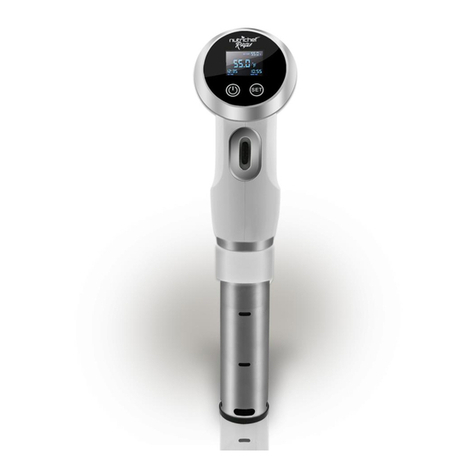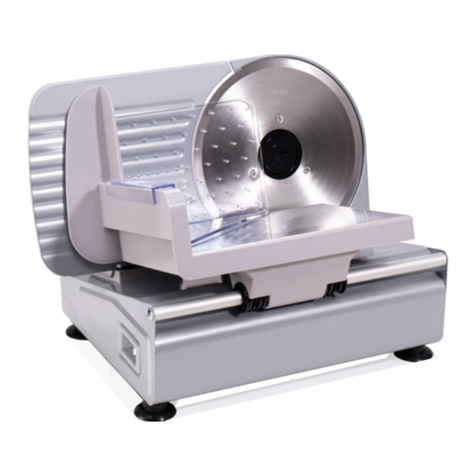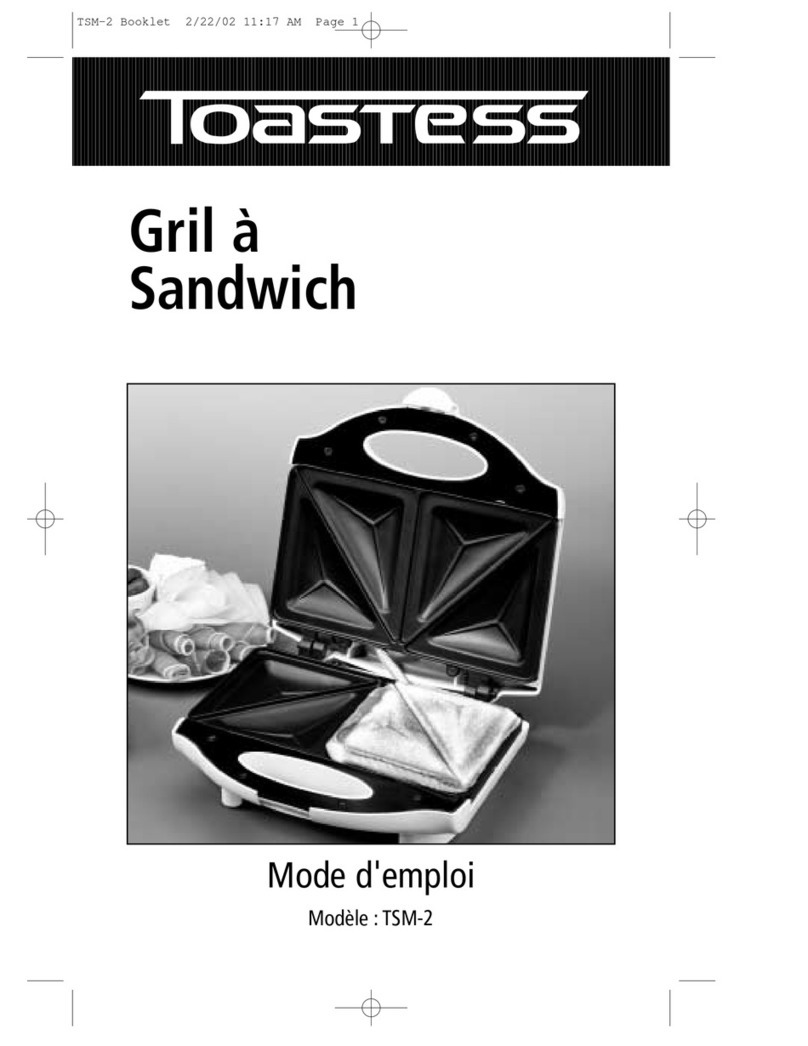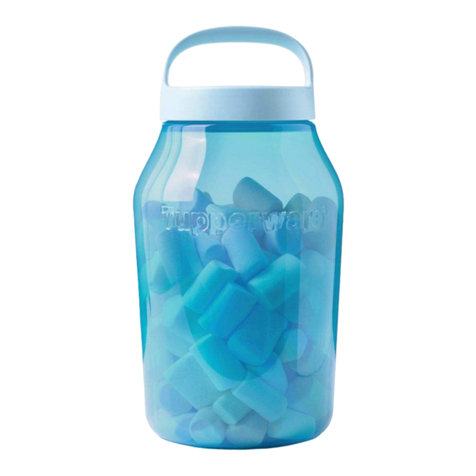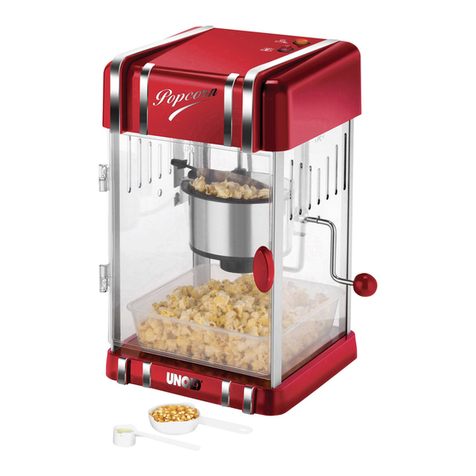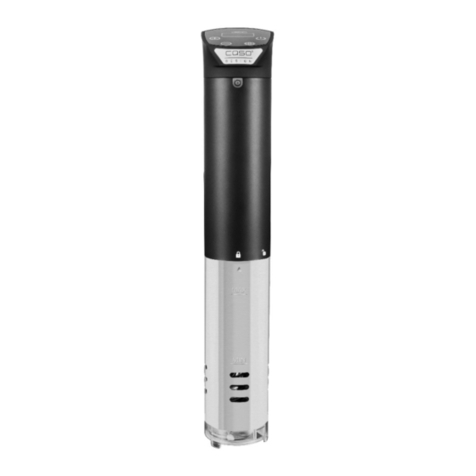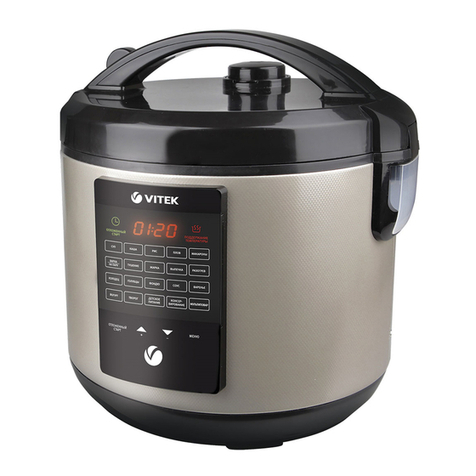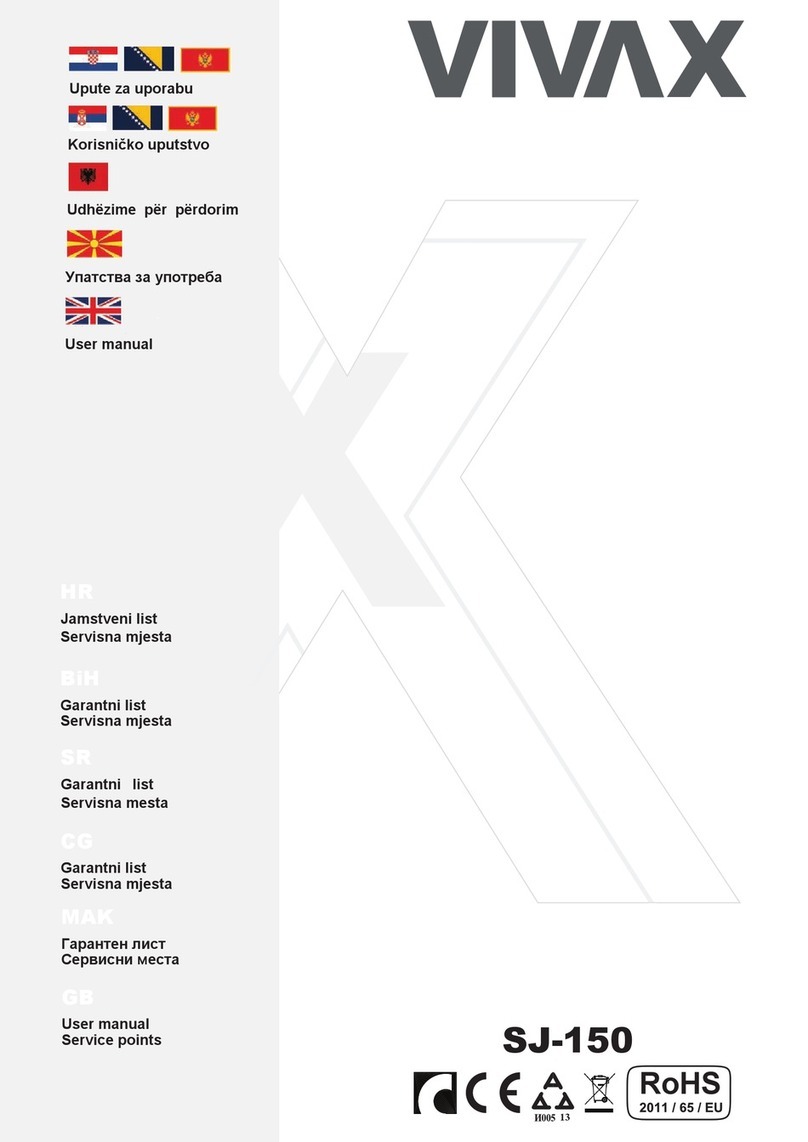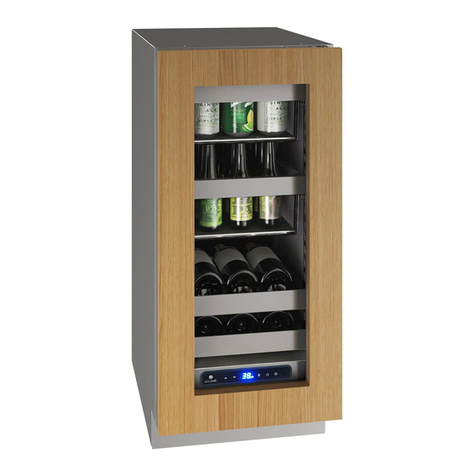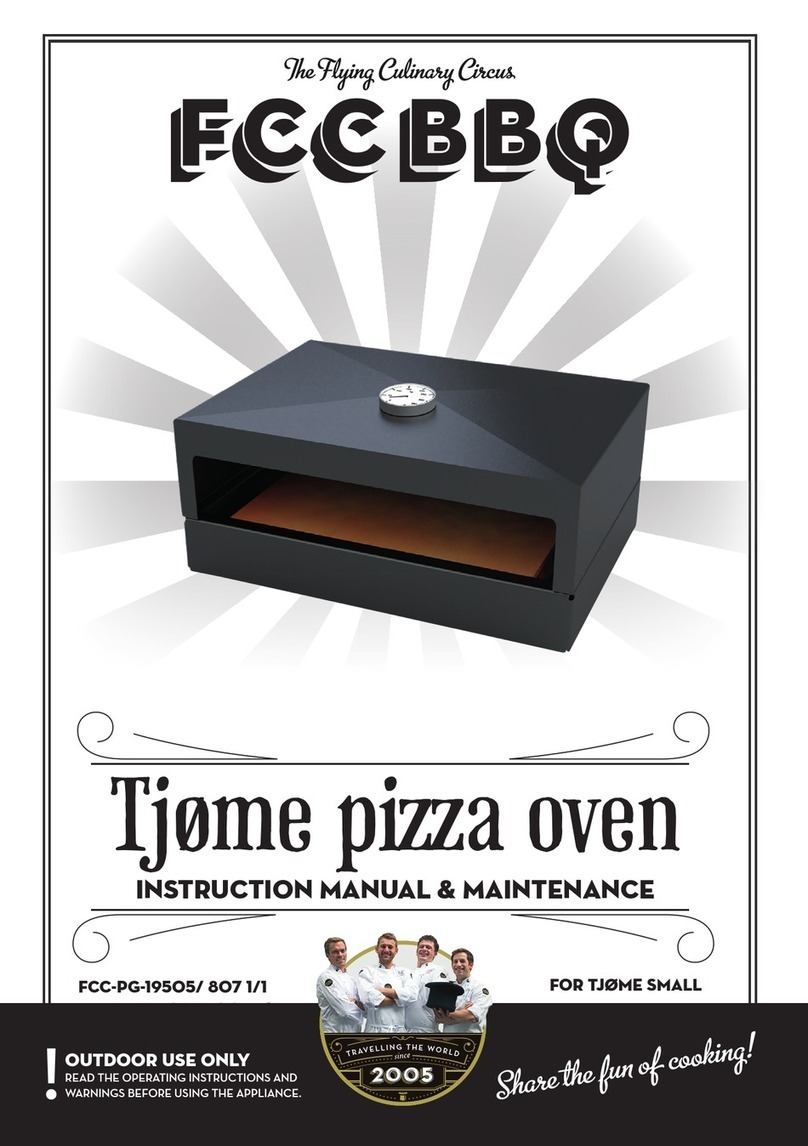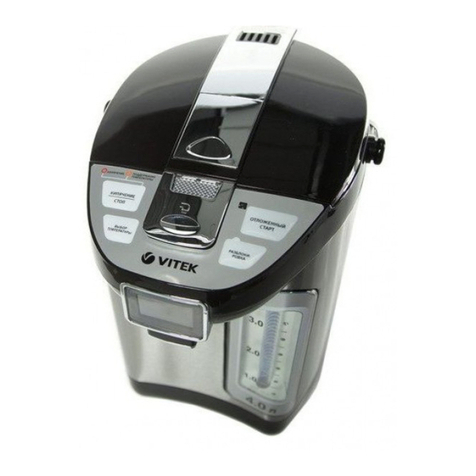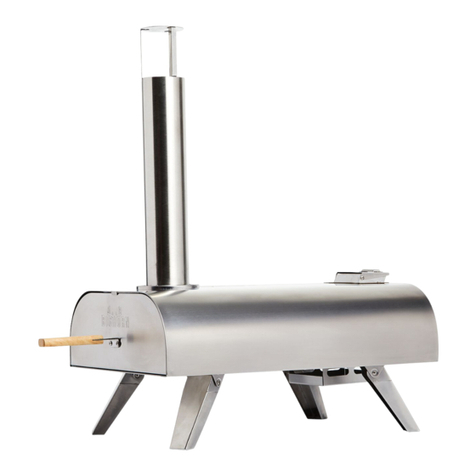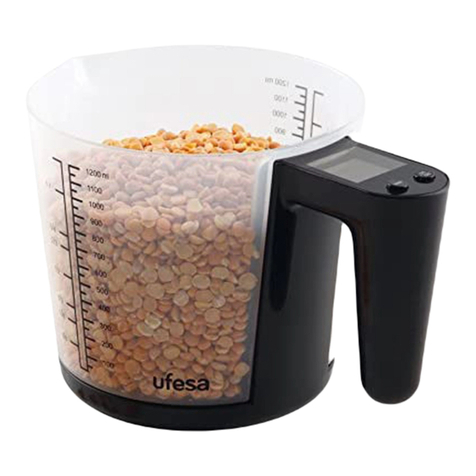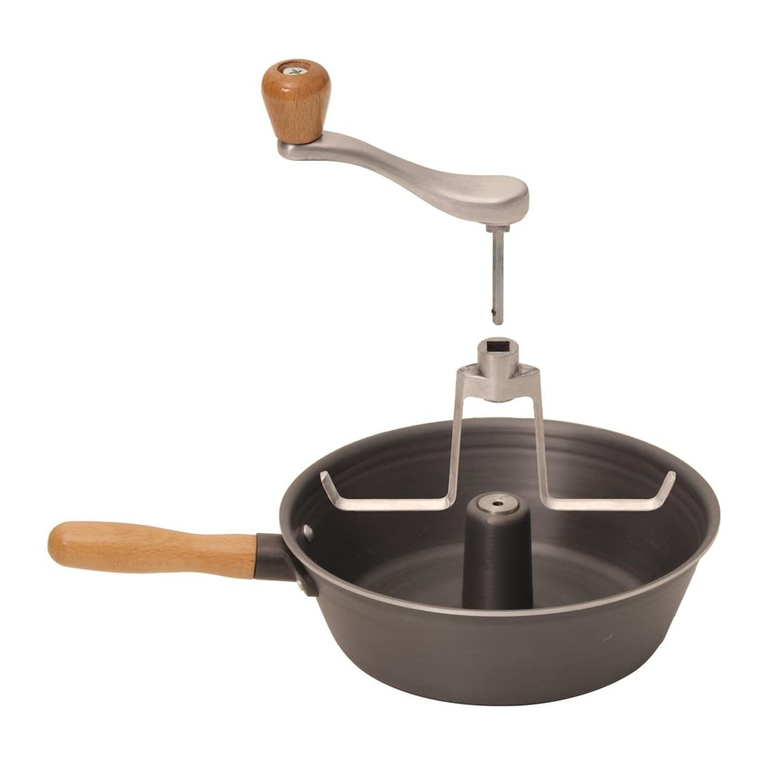Eastman Outdoors 38254 User manual

Food Dehydrator
Before operating, be sure
to read and understand
instructions completely.
Instructions and Care
Model: 38254
Eastman Outdoors, Inc.
HOUSEHOLD USE ONLY
Input: 120VAC, 60 Hz
Output: 245 Watts

Contents
Important Safeguards
Important Safeguards 2-3
Dehydrator Use and Care 3-4
Precautions 4
Service 4
General Drying Guidelines 4-5
Proper Dehydrating 6-8
Storage of Dehydrated Foods 9
Customer Assistance 9
One Year Limited Warranty 10
Other Eastman Outdoors®Accessories 11
DESIGNED FOR INDOOR HOUSEHOLD USE ONLY
To avoid serious injury or death, malfunction or
damage to property use the appliance only for its
intended use and always follow the Instructions.
When using electrical appliances, basic safety precautions should
always be followed, including the following:
1. Read and understand all instructions before use.
2. Do not leave the dehydrator operating unattended at any time.
3. Do not touch hot surfaces.
4. To protect against electrical shock, do not immerse the base power
unit or any part of the dehydrator cord and plug, in water or other
liquid.
5. Close supervision is necessary when any appliance is used by or
near children.
6. Unplug from outlet when not in use and before cleaning. Allow the
unit to cool before putting on or taking off parts.
7. Do not operate any appliance with a damaged cord or plug, or after
the appliance malfunctions, or has been dropped or damaged in
any manner. Return the appliance to the nearest authorized service
facility for examination, repair or adjustment.
8. The use of accessory attachments that are not recommended or
sold by the appliance manufacturer may cause re, electric shock, or
injuries. Sharp utensils should not be used inside the dehydrator.
9. Do not let cord hang over edge of table or counter, or touch hot
surfaces including the stove.
10. Do not use outdoors. Always dehydrate indoors and on a at
surface to allow sufcient airow. Never place base on carpet, towel,
newspaper, etc., which can block airow to the bottom of base and
cause failure.
2
WARNING

UNPACKING AND BEFORE FIRST USE
Carefully unpack the dehydrator. Wash the cover and trays in warm
water with a mild dish detergent added. Do not use any other cleaning
chemical which will damage the cover and trays. Clean the base with a
wet towel soaked in warm water and do not use any type of a cleaning
chemical on the base.
Do not immerse the dehydrator base in water or
any other liquid. Failure to follow this warning
may result in electric shock, injury, or even death.
TRAYS
Your dehydrator’s cover and trays are easy to clean. Simply soak in
warm water with a mild detergent for several minutes. A soft- bristle
brush will loosen food particles that resist softening by soaking. Don’t
clean any parts with scouring pads, abrasive cleaners, or sharp utensils,
as they tend to damage the surface. The trays can be washed on the
top rack of your dishwasher if you remove them before the drying cycle.
Important Safeguards (Cont.)
Dehydrator Use and Care
11.Never cover entire unit with anything, as that will cause failure. The
dehydrator needs an open, breathable space to function properly.
12.Do not dehydrate without the top cover in place. Dehydrating
temperatures will never be reached if the top cover is not in place.
13.Do not place on or near a hot gas or electric burner or in a heated
oven.
14.Do not use this appliance for other than its intended use of
dehydrating meats and produce.
SAVE THESE INSTRUCTIONS
NOTE: This appliance has a polarized plug (one blade wider than
the other). To reduce the risk of electrical shock, this plug will t on a
polarized outlet only one way. If the plug does not t fully into the outlet,
reverse the plug. If it still does not t, contact a qualied electrician. Do
not attempt to defeat this safety feature.
Short Cord Instructions – a short power supply cord is provided to
reduce the risk resulting from becoming entangled in or tripping over a
longer cord. Extensions cords may be used if care is exercised in their
use. If an extension cord is used, the marked electrical rating of the cord
should be at least as great as the electrical rating of the appliance. The
longer cord should be arranged so that it will not drape over the tabletop
where it can be pulled on by children or tripped over unintentionally.
3
WARNING

CAUTION: Remove the trays from the dishwasher before the beginning
of drying cycle of your dishwasher. Leaving the trays in the dishwasher
during the drying cycle may warp the trays which will result in an
improperly operating dehydrator.
BASE
Your dehydrator’s base contains all of the moving mechanical parts and
electrical components so use proper care when cleaning. Make sure
that the base is unplugged from the outlet before cleaning. Clean the
base with a wet towel soaked in warm water and do not use any type of
a cleaning chemical on the base.
Follow these safety precautions when dehydrating food:
• Wash hands thoroughly prior to handling any food.
• Make sure all utensils, containers, and countertops are thoroughly
cleaned and disinfected before using.
• Thoroughly clean and disinfect all cutting boards, wooden or plastic.
• After drying, store dried foods in refrigerator or freezer.
• After opening sealed containers of dried food, consume food as soon
as possible. If mold is found inside a storage bag of dried food, the
whole container must be thrown away.
• Tightly reseal opened containers of dried food and store in the
refrigerator to maintain freshness and quality.
• Do not dry foods that have been prepared with or marinated in alcohol.
• Do not use the trays in a conventional oven or with any other
appliance.
• Always use all 4 trays when drying in your dehydrator, even if one or
more trays are empty.
4
Precautions
Service
General Drying Guidelines
There are no user serviceable parts. Should you experience any
problems with your grinder, please call Eastman Outdoors Customer
Service at 1-800-241-4833.
CAUTION: When handling raw meat of any kind, clean and disinfect all
cooking surfaces, tools, and cutting boards before and after use. When
using wild game, freeze the meat for at least 60 days at 0°F (-18°C)
before preparation as a precaution against parasites. See FDA safety
measures at www.foodsafety.gov.
Experiment with different drying temperatures and thickness of meats or
produce. You will determine what works best for your particular needs

5
and preferences. Use the following guidelines:
1. To produce a quality dried product, it is necessary to work quickly
when preparing foods for drying.
2. Make sure to spread all foods evenly on the trays and in single
layers. If care is not taken to prevent overlapping of food, the areas
that are overlapped will take twice as long to dry.
3. Foods placed in your dehydrator need to dry continuously at the
recommended temperatures. Do not turn off your dehydrator until all
food is dried. Do not leave partially dried food on the trays which will
result in spoilage.
4. Do not add additional food to a batch of already partially dried food.
It will slow the rate of drying for both products.
Periodically check each tray for proper dryness of foods. Remove foods
that have reached the proper dryness, pat them dry with a paper towel
to remove any excess fat, and then store them in a clean dry container
and in in your refrigerator while waiting for the remainder of the food to
be done.
SELECTING FOODS TO DRY
Select the best quality produce at the peak of ripeness and avor. Wash
carefully to remove debris, dust and insects. Cut away all bruised and
damaged sections.
LOADING TRAYS
Lay food pieces evenly on trays. Don’t overlap food pieces, as this will
both prolong drying time and it will leave partially dried areas of food. As
each tray is loaded, place it on the dehydrator to begin drying.
DRYING TIME
Drying times can and will vary, depending on the type of food, the
amount of food and its thickness and evenness of the slices. Other
factors affecting drying time will be the amount of water in the food,
humidity and temperature of the room, and altitude. Drying times can
also vary greatly from day to day, depending on the humidity in the air.
Keep records to help you predict drying times for specic foods.
DRYING TEMPERATURE
The actual temperature of the food will remain 15°F to 20°F lower than
the room air temperature for the rst couple of hours in the dehydrator.
Meats and Poultry Highest setting
Fish 130°F to 140°F
Fruits and Vegetables 130°F to 140°F
Herbs, Spices, Nuts, and Seeds 90°F to 100°F

6
Proper Dehydrating
PREPARATION
The Eastman Outdoors®Multi-Purpose Food Slicer will speed the
slicing and ensure uniform slices, which will allow food to dry at the
same rate.
WILD GAME JERKY - DRY AT HIGHEST SETTING
Jerky is a favorite snack for anyone; at school, lunch, on the trail or
just about anywhere! It is made by seasoning lean, raw game meats in
a salt mixture (cure) and marinate, then drying it without cooking. The
nished jerky product is protein-rich and ever so delicious on its own or
used as a savory broth base for soups and stews.
When you are jerking game meats, freeze the meats for at least 60 days
at 0°F or colder before drying as a precaution against parasites that the
animal may have been carrying. Then partially thaw the meat, cut into
strips 1/4" to 3/8" thick and 6" long. It is easier to slice partially frozen
meat for jerky. Cut meat in uniform thickness so they all dry in the same
amount of time. It is best to cut strips across the grain to produce jerky
that is easier to break apart and chew.
Add delicious Eastman Outdoors®jerky cure and seasonings which
are available in a large variety of avors or your own cure and recipe
marinade for a minimum of 4 to 8 hours in the refrigerator before drying.
The longer you marinate the meat, the more avorful the jerky. If you
use your own recipe, be sure to use a cure and spice combination that
includes salt (Sodium Nitrite) to prevent bacterial growth during the
initial stages of drying.
You can make delicious jerky from ground game meat, using the
Eastman Outdoors®Jerky and Sausage Gun Kit and our large variety of
delicious seasoning packs.
When making jerky from wild game meats be sure to dry it at the
highest temperature setting. Pat jerky with clean paper towels several
times during the drying cycle to remove any oils that accumulate on
the top of the jerky. When removing jerky from dehydrator trays, wrap
slices in paper towels so excess fat can be absorbed which will help to
increase storage shelf life.
CAUTION: Finally after dehydrating, heat all of the meat slices in your
oven at a minimum temperature of 165°F for at least 30 minutes as a
precaution against the risk of parasites such as salmonella.
JERKY USING MEATS OR POULTRY - DRY AT HIGHEST SETTING
Jerky can also be made from a variety of other meats and poultry. When
purchasing meats for jerky, choose freshly butchered and lean meats
with minimal marbling (fat), as fat tends to get rancid during storage.
When making jerky from pork, chicken or turkey, use precooked
and processed meat. A lean cut of ank steak or round steak makes
excellent jerky.

7
To make jerky from ground meat, choose freshly ground 85% to 90%
lean ground meat. Ground meat jerky is easier to make, dries faster,
and is less expensive and easier to chew than jerky slices.
Add the delicious Eastman Outdoors®jerky cure and seasonings or
your own cure and recipe marinade for 4 to 8 hours in the refrigerator
before drying. The longer the meat marinates, the more avorful the
jerky. If you use your own recipe, be sure to use a cure and spice
combination that includes salt (Sodium Nitrite) to prevent bacterial
growth during the initial stages of drying.
Be sure to dry meats and poultry at the highest temperature setting.
CAUTION: Finally after dehydrating, heat all of the meat slices in your
oven at a minimum temperature of 165°F for at least 30 minutes as a
precaution against the risk of parasites such as salmonella.
STORAGE OF YOUR JERKY
Jerky that is stored un-refrigerated will start to go rancid at room
temperature after 3 to 4 weeks. Refrigerate or freeze for longer storage
or until your are ready to consume. If any ice crystals have formed
inside the storage bag or container, re-package in a dry container. If
jerky is dried thoroughly, it will last for several weeks un-refrigerated. All
types of jerky must be dried sufciently to avoid mold. If mold is found
inside a storage bag of jerky, the whole container must be thrown away.
DRYING FISH - DRY AT 130ºF TO 140ºF
Lean de-boned sh can be used for jerky. You can also dry de-boned
fatty sh but it will not keep at room temperature for any more than
one week. Fish jerky should contain about 15% moisture when it is
completely dry. It will be pliable and rm. If there is any doubt about the
dryness, store in refrigerator or freezer to avoid the risk of spoilage.
Previously cooked sh may also be dried, although it will have a
different taste than sh jerky made from fresh sh. Choose fresh lean
sh to dry.
If you catch the sh, clean and de-bone it promptly and keep on ice until
you are ready to dehydrate. If you are purchasing sh, make sure it is
fresh and not previously frozen. Previously frozen sh which is made
into jerky will have a taste quality is inferior to fresh sh jerky.
Cut sh into 1/4" to 3/8" thick strips. Marinate in your own favorite
marinade. When using your own recipe, be sure to include at least
1-1/2 to 2 teaspoons salt (Sodium Nitrite ) per pound of fresh sh. Salt
slows the growth of surface bacteria during the initial stages of drying.
Marinate for at least 4 to 8 hours in refrigerator so sh will absorb salt
and seasonings.
Dry the sh strips at 130°F to 140°F until they feel rm and dry, but don’t
crumble. There should be no moist spots.

FRUITS - DRY AT 130ºF TO 140ºF
Wash fruit thoroughly and remove any imperfections. Remove skins (if
desired), stems and seeds. Halve or slice in 1/4" to 1/2" circles or slices.
Some fruits have a natural protective wax coating such as grapes,
blueberries, cranberries, etc. If you want to dry these fruits whole, rst
dip them into boiling water for 1 to 2 minutes. This makes the skin more
porous by removing the natural wax coating and thereby speeds up the
drying time.
VEGETABLES - DRY AT 130ºF TO 140ºF
Wash vegetables thoroughly and remove any blemishes. Peel, trim,
core, and/or slice vegetables. Halve or slice in 1/4" to 1/2" circles or
slices.
Most vegetables must be blanched before dehydrating, either by
steaming over boiling water on your stove or in the microwave oven.
Blanching slows the enzyme action which will continue during drying
and storage.
Steam until vegetables are heated completely through, but not cooked.
This is usually about 1/3 of the time required to cook the vegetable.
Vegetables should still be crunchy. Drain in steamer rack and place
immediately on dryer trays.
A microwave oven can also be used for blanching vegetables. Prepare
them in the same manner as for steam blanching. Place them in a
microwave-safe dish, cover and cook on high for about 1/2 of the
time required to completely cook the fresh vegetable. Drain and place
immediately on dryer trays.
Load blanched vegetables onto drying trays, making sure that air can
move freely between the pieces. For vegetables, such as corn or peas,
that tend to clump together, stir occasionally to allow air to reach all of
the pieces.
Vegetables are dried until they are crisp, tough, or brittle. Package
immediately after drying to prevent absorption of moisture from the air.
TESTING FOR DRYNESS
Food must be monitored during the nal stages of dehydrating to
prevent over-drying. Over-dried foods will lose quality in texture,
nutrition and taste. To test for dryness, remove a piece of food, let it cool
and feel with your ngers for dryness. Use the following guidelines:
1. Jerky should be tough, but not brittle.
2. Dried sh should be tough, but not brittle. If the sh is high in fat it
may still appear moist due to the high oil content.
3. Fruits are pliable and leathery with no spots of moisture. Tear in
half, pinch and watch for moisture drops to appear along the tear. If
no moisture appears then it is sufciently dry for long term storage.
4. Vegetables should be tough or crisp.
8

The storage area should be cool, dry and as dark as possible. The
darker and cooler the storage area, the longer the dried foods will last
with good quality and nutritive value.
The ideal storage temperature for dehydrated food is below freezing up
to 60°F. The ideal storage place is in your freezer or refrigerator most
particularly for storing dried meats, sh and vegetables.
All dried foods should be stored in clean, dry and airtight, and moisture
proof containers. Package all dried foods promptly after patting dry with
paper towels to soak up any excess oils. Packaging the dried foods
promptly after dehydrating helps to prevent the foods from becoming
contaminated and sticking to each other. Re-hydration caused by
humidity can occur quickly after dehydrating.
Home vacuum packaging appliances are ideal for packaging dried
foods. They can dramatically extend the shelf life of dried foods by 3 to
4 times.
Do not store fruits and vegetables together in the same storage
container because the avors and moisture will transfer between foods.
At Eastman Outdoors, Inc., we sell the safest and highest quality
products available. We are condent that you will enjoy years of
dependable service from your new Eastman Outdoors®product. If you
ever have questions or concerns regarding any Eastman Outdoors®
products, call Eastman Outdoors'Customer Service department at
1.800.241.4833 or visit our website at www.eastmanoutdoors.com.
9
Storage of Dehydrated Foods
Customer Assistance

Standard Limited Warranty
LIMITED WARRANTY: This Eastman Outdoors®product is warranted
against defects in material and workmanship for one year following its
date of purchase by the original purchaser, provided the product is used
in accordance with Eastman Outdoors’ printed instructions. Eastman
Outdoors, Inc. warrants that the enclosed hardware (where applicable)
is free from physical defects for a period of one year from the original
date of retail purchase. This warranty does not cover damage resulting
from abuse, improper use, user negligence or accident, or normal wear.
Eastman Outdoors, Inc. entire liability and your EXCLUSIVE REMEDY
if product is defective in material or workmanship during the warranty
period, is repair or replacement at Eastman Outdoors’s expense. NO
OTHER WARRANTIES, WHETHER EXPRESSED OR IMPLIED,
INCLUDING WARRANTIES OF MERCHANTABILITY AND FITNESS
FOR A PARTICULAR PURPOSE, SHALL APPLY TO THE PRODUCT.
Eastman Outdoors, Inc. shall not, in any event, be liable for any
incidental or consequential damages, either for breach of this warranty
or any other reason resulting from the use of this product. This warranty
gives you specic legal rights. You may also have other rights that vary
from state to state.
REPAIR PROCEDURES: Eastman Outdoors, Inc. will repair or
replace products not conforming to this limited warranty at no charge.
If you nd a product to be defective, contact the Eastman Outdoors
Customer Service department at 1-800-241-4833 . When you receive
authorization, return the product as directed. Product repairs not covered
by warranty, and product updates, will be provided at a set rate.
LIMITATIONS: This warranty is void if the product is damaged by
improper or abnormal use or by accident; if the product is altered
or modied in any way other than as directed by ofcial Eastman
Outdoors, Inc. instructions; or if any attempt is made to repair the
product without authorization from Eastman Outdoors, Inc. Eastman
Outdoors®products are intended for residential indoor use only.
Eastman Outdoors®products are in all events not suitable, and are not
authorized, for use in any situations that might pose potential injuries to
life and health. This warranty is not assignable or transferable.
EXCEPT AS PROVIDED IN THIS LIMITED WARRANTY, THE
EASTMAN OUTDOORS®PRODUCT IS PROVIDED “AS IS”.
One Year Limited Warranty
10

To order any of the Eastman Outdoors®accessories shown above
visit your local Eastman Outdoors®retailer or call Eastman Outdoors
Customer Service at 1-800-241-4833. We will be glad to help you with
any of your questions or ordering needs.
Eastman Outdoors®Accessories
11
Grinder Food Slicer
Freezer Bag / Tape Dispenser
Kit and Rell Kit
Jerky & Sausage
Maker Kit
Jerky & Sausage
Seasoning Packs

Eastman Outdoors, Inc.
3476 Eastman Drive
Flushing, MI 48433
800-241-4833
www.eastmanoutdoors.com
Revision date: 3/8/12
Made in China


Déshydrateur Alimentaire
Avant d'utiliser l'appareil,
assurez-vous de lire et
bien comprendre les
instructions.
Instructions et entretien
Modèle: 38254
Eastman Outdoors, Inc.
UTILISATION COMME
APPAREIL MÉNAGER
SEULEMENT
Entrée: 120VCA, 60 Hz
Sortie: 245 watts

Contenu
Mises en garde importantes
Mises en garde importantes 2-3
Utilisation et entretien du déshydrateur 3-4
Précautions 4
Service 5
Guide d'utilisation 5-6
Déshydratation adéquate 6-9
Conservation des aliments déshydratés 9-10
Aide à la clientèle 10
Garantie limitée d'un an 10
Autres accessoires Eastman OutdoorsMD pour le plein air 11
CONÇU POUR ÊTRE UTILISÉ COMME APPAREIL MÉNAGER À
L'INTÉRIEUR SEULEMENT
Pour éviter des blessures graves ou la mort, un
mauvais fonctionnement ou des dommages à la
propriété, utilisez l'appareil seulement pour son usage
prévu et suivez les instructions.
Lorsque vous utilisez des appareils électriques, certaines précautions de base
s'imposent comme les suivantes:
1. Lisez toutes les instructions an de bien les comprendre avant d'utiliser
l'appareil.
2. Ne laissez pas le déshydrateur fonctionner sans surveillance en aucun
temps.
3. Ne touchez pas les surfaces chaudes.
4. Pour vous protéger des chocs électriques, n'immergez pas le bloc
d'alimentation ou toute partie de la che ou du l d'alimentation du
déshydrateur dans l'eau ou dans un autre liquide.
5. Une surveillance attentive est nécessaire lorsqu'un appareil est utilisé par
des enfants ou à proximité de ceux-ci.
6. Débranchez l'appareil de la prise de courant lorsque vous ne l'utilisez pas ou
avant de le nettoyer. Laisser l'appareil refroidir avant d'enlever ou d'ajouter
des accessoires.
7. Ne faites jamais fonctionner un appareil si le l d'alimentation ou la che est
endommagé ou si l'appareil fonctionne mal, a été échappé ou endommagé
de quelque façon. Retournez l'appareil au centre de réparation mandaté le
plus près de chez vous pour être inspecté, réglé ou réparé.
8. L'utilisation d'accessoires qui ne sont pas suggérés ou vendus par le
manufacturier d'appareils peut causer un feu, un choc électrique ou des
blessures. Vous ne devriez pas utiliser des ustensiles pointus dans le
déshydrateur.
2
AVERTISSEMENT

DÉBALLAGE ET AVANT D'UTILISER
Déballez le déshydrateur avec précaution. Lavez le couvercle et les plateaux
dans l'eau tiède à l'aide d'un détersif doux pour la vaisselle. N'utilisez aucun
autre produit de nettoyage chimique qui pourrait endommager le couvercle et
les plateaux. Nettoyez la base avec une serviette humide trempée dans de
l'eau tiède et n'utilisez aucun autre produit chimique de nettoyage sur la base.
Ne submergez pas la base du déshydrateur dans l'eau
ou dans un autre liquide. Si vous ne tenez pas compte
de cet avertissement, les conséquences pourraient être
un choc électrique, des blessures ou même la mort.
Mises en garde importantes
Entretien du déshydrateur
9. Ne laissez pas le l d'alimentation pendre sur le bord de la table, ou du
comptoir ou toucher une surface chaude incluant la cuisinière.
10. N'utilisez pas ce produit à l'extérieur. Déshydratez toujours à l'intérieur sur
une surface plane pour permettre une bonne circulation d'air. Ne placez
jamais la base de l'appareil sur un tapis, une serviette, un journal, etc., ce
qui pourrait empêcher la circulation d'air à la base de l'appareil et causer
une défaillance.
11. Ne couvrez jamais l'appareil, car cela pourrait causer une défaillance.
Le déshydrateur nécessite une zone sans restriction, avec une bonne
circulation d'air, pour bien fonctionner.
12. Ne déshydratez jamais sans le couvercle supérieur en place. Les
températures nécessaires à la déshydratation ne seront jamais atteintes si
le couvercle n'est pas en place.
13. Ne placez jamais l'appareil près d'un brûleur à gaz ou d'un brûleur électrique
chauds ou sur ceux-ci ou dans un four chaud.
14. N'utilisez pas cet appareil pour d'autres usages que celui prévu qui est de
déshydrater des viandes et des fruits et légumes.
CONSERVEZ CES INSTRUCTIONS
NOTEZ BIEN: Cet appareil est muni d'une che polarisée (une broche plus
large que l'autre). Pour diminuer le risque de choc électrique, cette che se
branche seulement dans une prise polarisée d'une seule façon. Si la che ne
se branche pas complètement dans la prise, retournez-la. Si malgré tout elle ne
se branche pas complètement, communiquez avec un électricien qualié. Ne
tentez pas de neutraliser ce dispositif de sécurité.
Instructions pour le l d'alimentation court – Un l d'alimentation court est
fourni pour diminuer le risque que le l s'entremêle ou que vous trébuchiez sur
un l plus long. Une rallonge peut être utilisée si vous prenez les dispositions
nécessaires. Si vous utilisez une rallonge, les caractéristiques électriques
indiquées doivent être au moins de même niveau que celles de l'appareil
électrique. Le l plus long doit être placé pour qu'il ne pende pas sur le bord
d'une table où il pourrait être tiré par un enfant ou vous faire trébucher.
3
AVERTISSEMENT

PLATEAUX
Le couvercle et les plateaux du déshydrateur sont faciles à nettoyer. Trempez-
les simplement dans l'eau tiède avec un peu de détergent doux pendant
quelques minutes. Une brosse douce peut vous aider à déloger les morceaux
de nourriture qui n'ont pas été éliminés lors du trempage. Ne nettoyez aucune
pièce à l'aide de tampons à récurer, de nettoyants abrasifs ou d'instruments
pointus, car ils pourraient endommager les surfaces. Les plateaux peuvent être
placés dans le panier supérieur du lave-vaisselle si vous les retirez avant le
cycle de séchage.
MISE EN GARDE: Enlevez les plateaux du lave-vaisselle avant le début du
cycle de séchage. Si vous laissez les plateaux dans le lave-vaisselle durant le
cycle de séchage, ils pourraient se déformer et nuire au bon fonctionnement de
votre déshydrateur.
BASE
La base de votre déshydrateur contient toutes les pièces mécaniques et les
composants électriques et elle doit donc être nettoyée en prenant certaines
précautions. Assurez-vous que la base est débranchée de la prise avant le
nettoyage. Nettoyez la base avec une serviette humide qui a été trempée dans
de l'eau tiède et n'utilisez aucun autre produit de nettoyage chimique sur la
base.
Tenez compte de ces mesures de sécurité lorsque vous déshydratez des
aliments:
• Lavez bien vos mains avant de manipuler de la nourriture.
• Assurez-vous que tous les ustensiles, les contenants et les surfaces de travail
sont bien nettoyés et désinfectés avant l'utilisation.
• Nettoyez minutieusement et désinfectez les planches à découper en bois ou
en plastique.
• Après le séchage, rangez les aliments séchés au réfrigérateur ou au
congélateur.
• Après avoir ouvert un contenant scellé de nourriture séchée, consommez
ce produit le plus rapidement possible. Si vous trouvez de la moisissure à
l'intérieur d'un sac d'aliments séchés, vous devez mettre tout le sac au rebut.
• Scellez de nouveau tout contenant ouvert de nourriture séchée et rangez-le
dans le réfrigérateur pour en conserver la fraîcheur et la qualité.
• Ne séchez pas d'aliments qui ont été préparés avec de l'alcool ou marinés
dans de l'alcool.
• N'utilisez pas les plateaux dans un four conventionnel ou avec tout autre
appareil de cuisine.
• Utilisez toujours les 4 plateaux lorsque vous séchez des aliments dans votre
déshydrateur même si un ou plusieurs des plateaux sont vides.
4
Précautions

5
Service
Guide d'utilisation
Il n'y a pas de pièces qui peuvent être remplacées par l'utilisateur. Si vous avez
des problèmes avec votre déshydrateur, s.v.p., communiquez avec le service à
la clientèle Eastman Outdoors en composant le 1-800-241-4833.
MISE EN GARDE: Lorsque vous manipulez de la viande crue, nettoyez et
désinfectez toutes les surfaces de cuisson, les ustensiles et les planches
à découper avant et après l'utilisation. Lorsque vous utilisez de la viande
sauvage, congelez cette viande au moins 60 jours à 0ºF (-180ºC) avant de la
préparer comme précaution contre les parasites. Voir "FDA safety measures"
au www.foodsafety.gov.
Effectuez des essais avec des températures de séchage différentes et des
épaisseurs différentes de viandes ou de fruits et légumes. Vous pourrez ainsi
trouver ce qui convient le mieux à vos besoins et ce que vous aimez le mieux.
Suivez les indications suivantes:
1. Pour un produit séché de qualité, il est nécessaire de travailler rapidement
lorsque vous préparez des aliments pour sécher.
2. Assurez-vous de répartir tous les aliments de façon égale sur les plateaux
en une seule couche. Si vous ne prenez pas soin d'éviter le chevauchement
des aliments, les parties qui se chevauchent prendront deux fois plus de
temps à sécher.
3. Les aliments qui sont placés dans votre déshydrateur doivent sécher
de façon continuelle aux températures suggérées. Ne mettez pas votre
déshydrateur hors fonction avant que tous les aliments ne soient séchés.
Ne laissez pas de nourriture partiellement séchée qui pourrait se gaspiller
sur les plateaux.
4. N'ajoutez pas d'aliments additionnels à de la nourriture déjà partiellement
séchée. Cela ralentira le séchage des deux produits.
Vériez chaque plateau périodiquement pour un bon séchage de la nourriture.
Enlevez les aliments qui sont bien secs, essuyez-les avec une serviette en
papier pour enlever l'excès de graisse et rangez-les dans un contenant sec
dans votre réfrigérateur en attendant que le reste des aliments soit prêt.
CHOISIR LES ALIMENTS À SÉCHER
Choisissez les meilleurs fruits et légumes qui sont bien mûrs et savoureux.
Lavez-les minutieusement pour enlever les débris, la poussière et les insectes.
Coupez toute partie qui est meurtrie.
REMPLIR LES PLATEAUX
Placez les morceaux d'aliment de façon égale sur les plateaux. N'empilez pas
les morceaux, car cela prolongera la durée du séchage et laissera des sections
d'aliments partiellement séchés. Lorsqu'un plateau est rempli, placez-le sur le
déshydrateur pour commencer le séchage.
TEMPS DE SÉCHAGE
Le temps de séchage variera selon le type d'aliments, la quantité d'aliments

6
Déshydratation adéquate
PRÉPARATION
Le Multi-Purpose Food Slicer de Eastman Outdoors
MD
vous permettra de
trancher vos aliments plus rapidement et de façon égale pour que vos aliments
sèchent à la même vitesse.
JERKY DE VIANDE SAUVAGE – SÉCHER AVEC LE RÉGLAGE LE PLUS
ÉLEVÉ
Le jerky est une collation bien appréciée; à l'école, pour le lunch, dans le sentier
ou même ailleurs! On le fabrique en plaçant de la viande sauvage crue et
maigre dans un mélange de sel (cure) et de marinade avant de la sécher sans
la cuire. Le jerky est riche en protéines et délicieux mangé tel quel ou utilisé
pour des bouillons de soupes ou des ragoûts.
Lorsque vous faites du jerky avec de la viande sauvage, congelez la viande
pendant au moins 60 jours à une température de 0º ou moins avant de la
sécher comme précaution contre les parasites que pourrait transporter l'animal.
Ensuite, décongelez partiellement la viande, coupez-la en languettes de .6 cm
à .9 cm d'épaisseur et de 15 cm de longueur. Il est plus facile de trancher de
la viande partiellement congelée pour faire du jerky. Il est préférable de couper
des languettes contre le "grain" de la viande pour avoir du jerky qui soit plus
facile à briser et mâcher.
Ajoutez le délicieux Eastman Outdoors
MD
jerky cure avec épices qui est
disponible dans une variété de saveurs ou votre propre produit pour traiter la
viande et votre marinade en laissant la viande au réfrigérateur pour une durée
minimale de 4 à 8 heures avant le séchage. Plus vous marinez la viande
longtemps, plus votre jerky aura de saveur. Si vous utilisez votre propre recette,
assurez-vous d'utiliser un mélange de produit pour traiter (cure) et d'épices qui
comprennent du sel (nitrite de sodium) an de prévenir l'apparition de bactéries
pendant les premières heures du séchage.
et l'épaisseur et l'égalité des tranches d'aliments. D'autres facteurs qui ont
un impact sur le temps de séchage sont la quantité d'eau dans les aliments,
le degré d'humidité et la température de la pièce et l'altitude. Le temps de
séchage peut aussi varier d'un jour à un autre selon le degré d'humidité de l'air.
Conservez des notes pour vous aider à choisir un temps de séchage pour des
aliments particuliers.
TEMPÉRATURE DE SÉCHAGE
La température réelle de la nourriture demeurera de 66ºC à 93ºC plus basse
que la température de la pièce pour les deux premières heures dans le
déshydrateur.
Viande et volaille Réglage le plus élevé
Poisson 54°C to 60°C
Fruits et légumes 54°C to 60°C
Herbes, épices, noix et graines 32°C to 38°C

7
Vous pouvez faire du jerky délicieux à l'aide de viande sauvage hachée en vous
servant de l'ensemble Eastman Outdoors
MD
Jerky and Sausage Gun Kit et de
notre éventail complet d'assaisonnements.
Lorsque vous faites du jerky à l'aide de viandes sauvages, assurez-vous de
la sécher en utilisant le réglage de température le plus élevé. Tamponnez
plusieurs fois le jerky avec une serviette en papier propre pour enlever les
huiles qui s'accumulent sur le dessus de la viande. Lorsque vous enlevez
le jerky des plateaux du déshydrateur, enveloppez les tranches dans des
serviettes de papier an que la graisse en surplus soit absorbée pour prolonger
la durée de conservation du produit.
MISE EN GARDE: Finalement, après la déshydratation, faites chauffer toutes
vos tranches de viande dans le four à une température d'au moins 74ºC
pendant un minimum de 30 minutes comme précaution contre les risques de
parasites comme la salmonelle.
JERKY DE VIANDE OU DE VOLAILLE – SÉCHER AVEC LE RÉGLAGE LE
PLUS ÉLEVÉ
Le jerky peut aussi être fabriqué à partir d'une variété de viandes et de volailles.
Lorsque vous achetez de la viande pour le jerky, choisissez de la viande
fraîchement coupée et maigre avec le moins de persillage (gras) possible, car
le gras a tendance à devenir rance lors de la conservation. Lorsque vous faite
du jerky avec du porc, du poulet ou de la dinde, utilisez de la viande déjà cuite
et traitée. Un morceau de anc de bœuf ou de ronde de bœuf vous permet de
faire un excellent jerky.
Pour faire du jerky à partir de viande hachée, choisissez de la viande
fraîchement hachée, maigre à 85% ou 90%. Le jerky fait à partir de viande
hachée est plus facile à faire, sèche plus rapidement, et est moins dispendieux
et plus facile à mâcher que les tranches de jerky.
Ajoutez le délicieux Eastman Outdoors
MD
jerky cure avec épices qui est
disponible dans une variété de saveurs ou votre propre produit pour traiter la
viande et votre marinade en laissant la viande au réfrigérateur pour une durée
minimale de 4 à 8 heures avant le séchage. Plus vous marinez la viande
longtemps, plus votre jerky aura de saveur. Si vous utilisez votre propre recette,
assurez-vous d'utiliser un mélange de produit pour traiter (cure) et d'épices qui
comprennent du sel (nitrite de sodium) an de prévenir l'apparition de bactéries
pendant les premières heures du séchage.
Assurez-vous de sécher les viandes et la volaille en utilisant le réglage de
température le plus élevé.
MISE EN GARDE: Finalement, après la déshydratation, faites chauffer toutes
vos tranches de viande dans le four à une température d'au moins 74ºC
pendant un minimum de 30 minutes comme précaution contre les risques de
parasites comme la salmonelle.
CONSERVATION DE VOTRE JERKY
Le jerky rangé sans réfrigération commencera à devenir rance à la température
ambiante après 3 ou 4 semaines. Réfrigérez ou congelez pour une période de
conservation plus longue ou jusqu'à ce que vous soyez prêt à le consommer.
Si des cristaux de glace se sont formés à l'intérieur du sac ou du contenant de
conservation, replacez la viande dans un contenant sec. Si le jerky est bien
Table of contents
Languages:
Other Eastman Outdoors Kitchen Appliance manuals

Eastman Outdoors
Eastman Outdoors 38347 User manual

Eastman Outdoors
Eastman Outdoors 38253 User manual
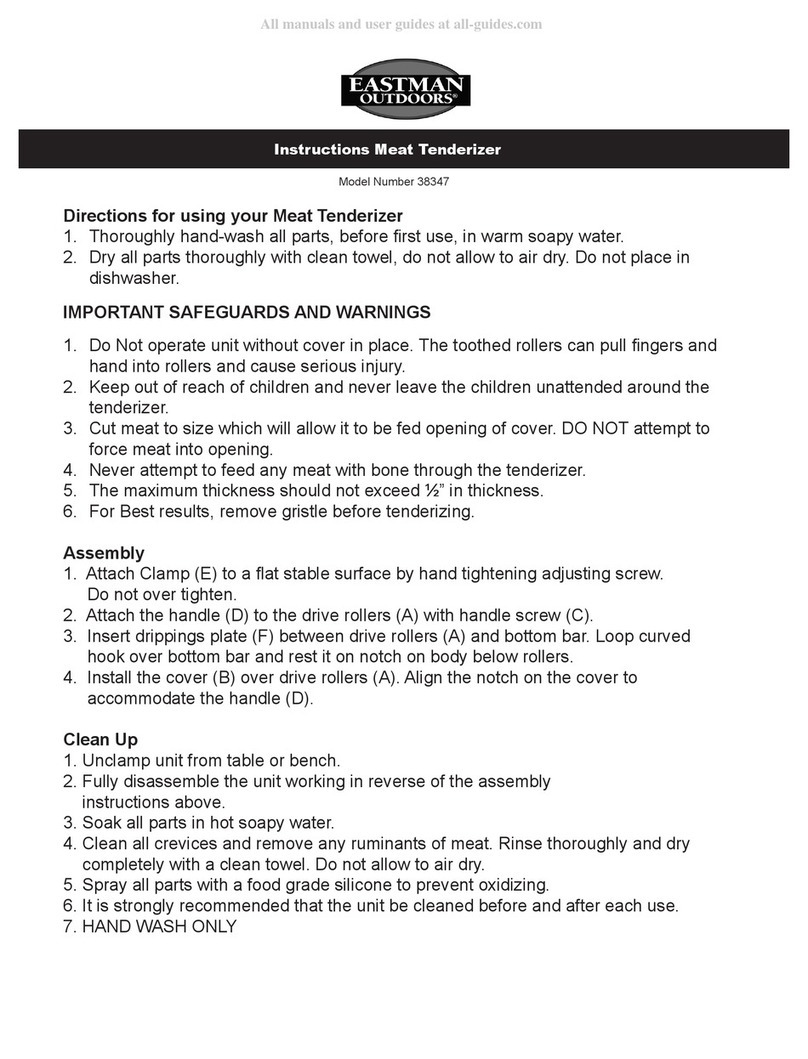
Eastman Outdoors
Eastman Outdoors 38347 User manual

Eastman Outdoors
Eastman Outdoors Sausage Stuffer User manual

Eastman Outdoors
Eastman Outdoors 38265 User manual

Eastman Outdoors
Eastman Outdoors 38266 User manual
